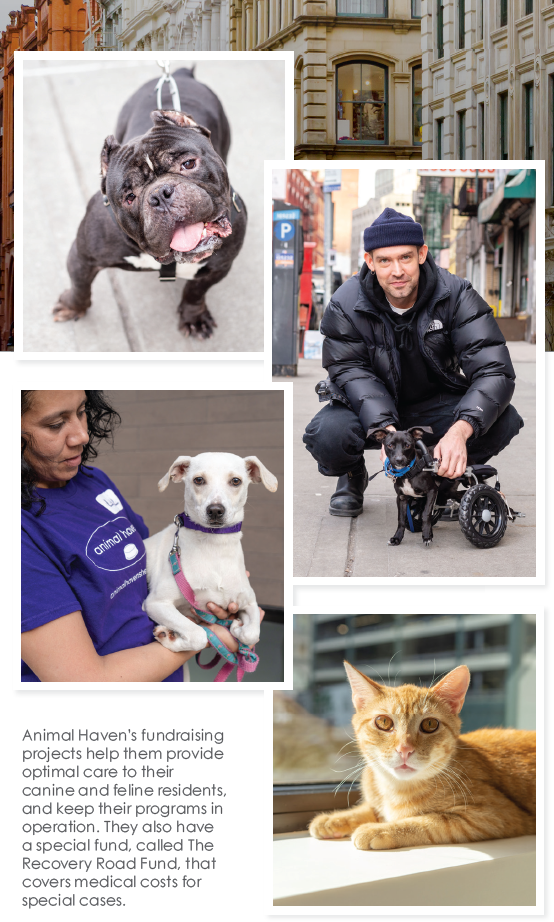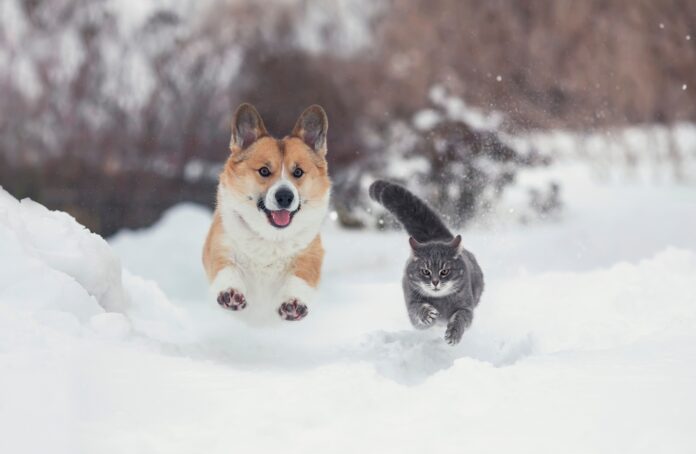Animal Haven

From community outreach initiatives to behavior modification training, this Manhattan-based non-profit has spent the last half-century developing programs to help animals and people in need.
Back in 1967, a group of animal lovers in New York City banded together to form a small rescue organization called Animal Haven. At the time, they didn’t foresee that their passion project would develop into one of the largest animal rescues in the state, or that they’d end up helping tens of thousands of dogs and cats. From their small headquarters – a tiny house located in Queens – they began caring for a few homeless felines. They continued at this capacity for over 30 years, slowly implementing changes and gradually growing. Then they decided they wanted to do more.
With three decades of experience under their belts, the staff at Animal Haven had an incredible grassroots support system in the NYC community. “In 2004, we were able to raise enough capital to rent a tri-level storefront in NYC’s Soho neighborhood,” says Shannon Kirkman, the organization’s director of marketing. “We outfitted it for our animal rescue needs, including a vet exam room, a large training/play room and a retail store for pet supplies.” Having a central location in the city meant a larger volume of animals in need, which their new space was able to support. More lives were saved, and Animal Haven’s reputation continued to grow.
Fifteen years and another relocation later, the Animal Haven of today has 15 staff members and a community of several thousand volunteers and fosters. They operate out of a state-of-the-art facility with a capacity for around 40 cats and 40 dogs – though they typically have around 100+ animals in their care at any given time – some of which arrive at the rescue with behavioral challenges that delay the adoption process. But Animal Haven isn’t in the business of turning animals away, so they’ve established a number of programs to solve these issues and enhance the bond between rescue animals and their adopters.
 “Internally, we address any special behavioral needs in our adoptable dogs via our Rehabilitation and Training program,” says Shannon. “Our training staff identifies behavioral needs, then develops a specific plan for each animal and works daily to teach the dogs the skills they need to be successful in a home environment.” This program not only serves to improve the dogs’ challenging behaviors, but is also a great way for them to receive mental enrichment. Ultimately, both outcomes help increase overall adoption rates.
“Internally, we address any special behavioral needs in our adoptable dogs via our Rehabilitation and Training program,” says Shannon. “Our training staff identifies behavioral needs, then develops a specific plan for each animal and works daily to teach the dogs the skills they need to be successful in a home environment.” This program not only serves to improve the dogs’ challenging behaviors, but is also a great way for them to receive mental enrichment. Ultimately, both outcomes help increase overall adoption rates.
But for the staff and volunteers at Animal Haven, the work doesn’t end once an animal finds his forever home. They provide post-adoption counseling and support to their adoptive families when needed, and always welcome animals back with open arms if they’re returned due to any number of extenuating circumstances. This was the case with Yoyo, a stray rescued from West Virginia. “When Yoyo first arrived, he was very uncomfortable being touched, and upon examination we realized he was deaf,” says Shannon. “Our training staff taught Yoyo through hand signals, and he’s learned that being touched can be a good thing!”
Yoyo was adopted for a year before he was returned to Animal Haven. His adopters were forced to relinquish him due to a housing complication, and the rescue staff was happy to accept him back into their care. While there was nothing that could be done to keep this particular pup in his home, Animal Haven’s Community Engagement Program offers support to adoptive families to help ensure the success of every match. They’re the only animal rescue in NYC with a licensed social worker on staff, and pride themselves on using holistic approaches to enhance the welfare of both humans and animals throughout the community.
It’s been more than 50 years since Animal Haven opened its doors, and countless lives have been touched since that time. Every challenge has given rise to a sweeping solution, and according to Shannon, this willingness to hurdle obstacles is part of what makes Animal Haven so special in the eyes of the community. “We’ve been able to take in animals that needed amputations, emergency surgeries, special extensive physical rehabilitation, and have even nursed several paralyzed animals back to mobility,” says Shannon. “We are very proud to be able to help these often-overlooked animals in need. Every single one of them is worth it!”
Find Animal Haven online at animalhavenshelter.org or follow them on Facebook, Instagram or Twitter (@animalhaven).




